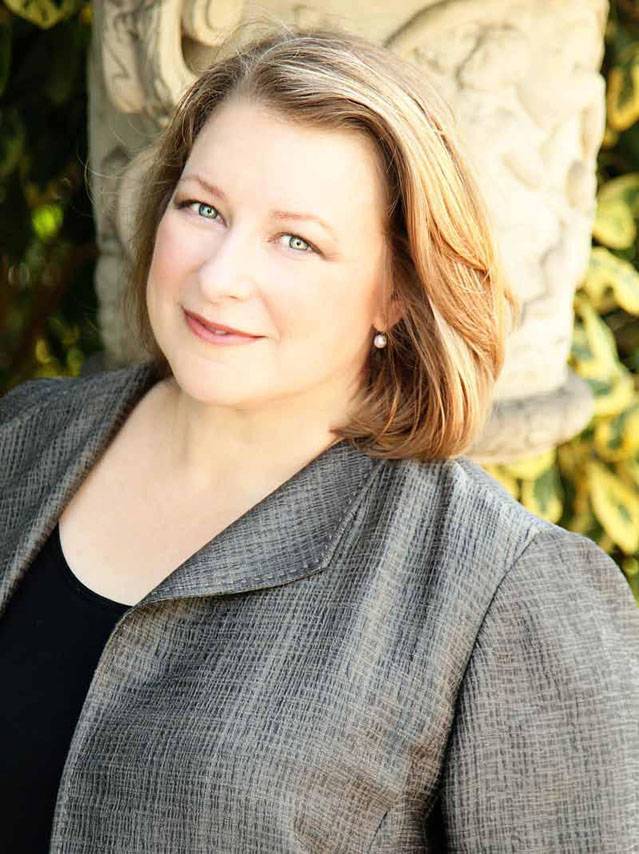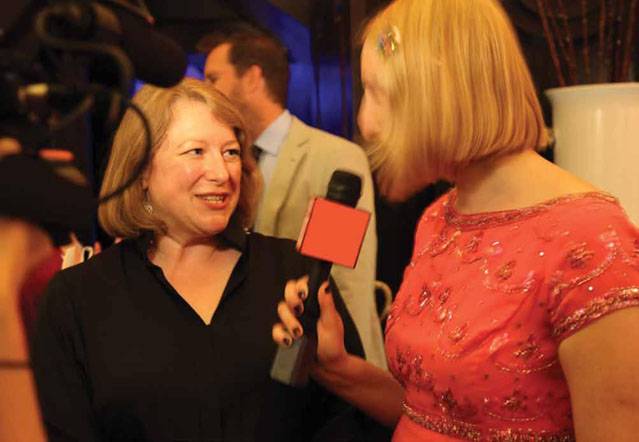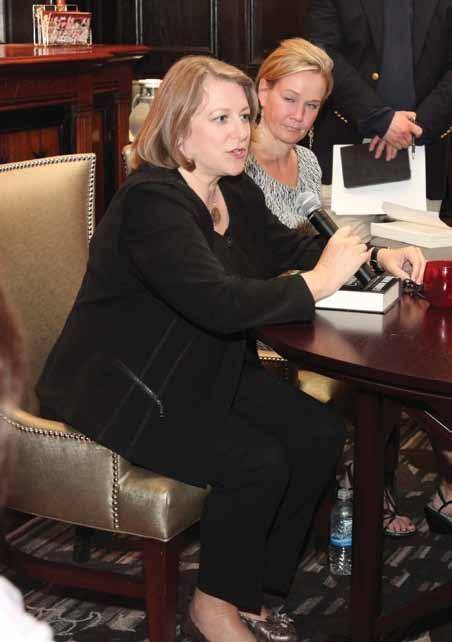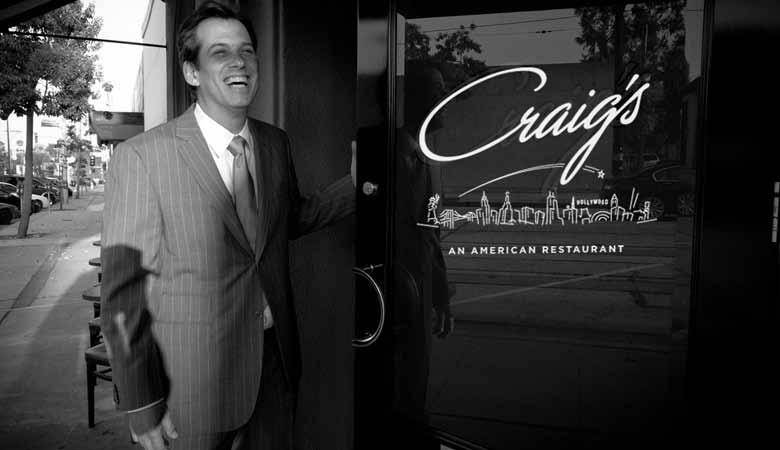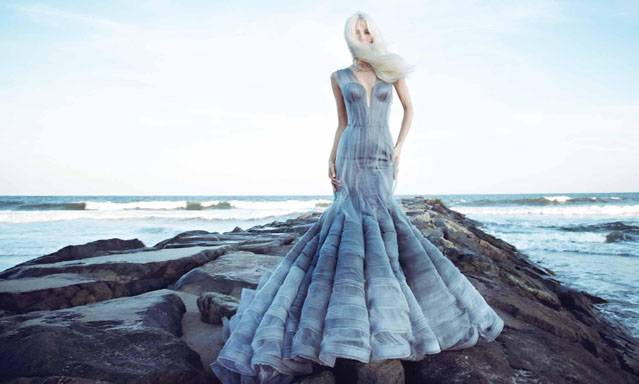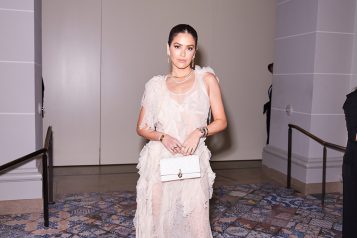If there’s one thing that Deborah Harkness is certain of, it is that the people of the past aren’t so very different from the Angelenos of the present.
She should know. As an acclaimed historian as well as a professor of history at the University of Southern California, Harkness is used to immersing herself in bygone times.
This dedication to making the past relatable and humanizing historical figures is partially why her first novel, “A Discovery of Witches”, was so wildly successful. It debuted at No. 2 on the New York Times bestseller list and has now been sold in at least 34 countries. It also turned Harkness into the ‘It Girl’ author of 2011.
The award-winning scholar is about to enjoy even more success as she has sold Discovery’s film rights and recently released its sequel, “Shadow of Night”, on July 10.
“When I wrote [“Discovery”] I didn’t know if anyone was going to publish it,” she admits. “It’s still hard to believe this is happening, that a film is happening.”
Though the three-part deal to adapt Harkness’ All Souls trilogy for the big screen came about last year, very little has been said about the project. Unfortunately, fans of the novel shouldn’t expect to see it hit movie theaters any time soon, as it’s still in the first stages of its cinematic evolution.
“We’re in script development,” Harkness reveals now. “I sold the rights to Warner Bros. last summer and Alison Greenspan and Denise Di Novi [“Sisterhood of the Traveling Pants” and “The Lucky One” producers] immediately signed on. We were lucky to get Pulitzer Prize winner David Auburn [“Proof”] to work on the screenplay last autumn, so that’s where we are right now. Things are moving at an incredibly rapid pace.”
“The biggest luxury – regardless of whether you were living in 16th century London or 21st century LA – is space.”
“A Discovery of Witches” tells the story of a modernday witch who calls up an enchanted manuscript at Oxford University’s Bodleian Library, attracting a slew of dangerous magical creatures. The plot blends elements of scientific discovery, historical fact and the very current trend of vampire/human romance.
Though every name from Christian Bale to Michael Fassbender has been named to play the plumb part of otherworldly French vampire geneticist Matthew Clairmont, Harkness is adamant that a casting decision hasn’t yet been made. Nor, she says, does she wish to have a say in who should win the role.
“Happily, I’m not the casting director. Casting Matthew is someone else’s problem,” she says. “Whoever takes the role has to be someone up for the challenges involved of conveying a 16th century vampire scientist living in modern times.”
She also swears that the role is not based on any one person, for the simple reason that someone as perfect as the character she’s created cannot actually exist. “He’s really a composite of all kinds of things,” she explains. “When I first handed the manuscript to my agent, he said ‘Matthew can’t be like this. No one would believe this is really true, and if there’s ever any kind of movie, no one will be able to play him: he’s just too perfect.’”
In creating the sophisticated, supremely elegant scientist, Harkness had to use her research skills to make him more realistic. She eventually decided that he would have classic, cultured and very expensive tastes.
“When I was creating Matthew’s character, I realized that if you were a vampire who’s been around as long as he had, you would eventually develop a connoisseur’s eye. You would want quality over quantity, and if you found something that you really liked, like a Mont Blanc pen, you wouldn’t feel any great compulsion to change your tastes.”
She adds, “Vampires aren’t a huge follower of trends; to me they define ‘old money.’ They aren’t subject to fads or fashion. Matthew, in that sense, is a bit old-fashioned in his tastes. He’s a Cartier man; he has the classic pilot’s watch. He drives a vintage Jaguar.”
If it sounds like Matthew could have been a modern-day Los Angeles power player, this, as it happens, was actually Harkness’ intent. In fact, the similarities between 21st century men and those of the past are a predominant theme in “Shadow of Night.”
“It’s going to be a unique experience for people to see what life was like for the rich and powerful people of the 16th century, both in court and in an urban environment,” she notes. “Most of this book takes place in cities.
It’s a glimpse into how a wealthy and powerful man lived his urban life. It’s going to be quite interesting for Los Angeles residents to see that Elizabethans loved their take-out [food] just as much then as we do now, and that traffic problems were also an issue in 16th century England.”
She continues, “Glamorous transportation was just as important then as it is now, as well. Having a really gorgeous, fast horse in Elizabethan times was just as necessary as having a fast, sexy car in modern- day Los Angeles, as was being able to serve great wine and wearing stylish clothes. However, the biggest luxury – regardless of whether you were living in 16th century London or 21st century LA – is space. These cities are awfully crowded, and if you had the ability and means to own a big house, that defined and still defines your wealth. Some things just don’t change.”
Just as making the past relatable has helped make her prose believable, it has also made Harkness a hit with her history students at USC.
“I am very concerned that they understand that these people of the past we speak about are real,” she says. “So often you read about someone like Henry VIII who was such a larger-than-life figure, and you tend to forget that he was 18 when he took the throne. So I ask my students, ‘If someone handed you a country when you were 18, what would you do?’ They say, ‘I’d enjoy myself!’ and I say, ‘Exactly.’
“I try to keep history real and remind people that all we can do is what seems right in the moment; it is only in hindsight that we might see things differently. Not that Henry VIII should be forgiven for everything he did, but once upon a time he was just a teenage man who was catapulted into a position of power. It’s the same in my books. I love characters and figuring out why people do what they do, and that holds true for both the history I teach and the fiction I write.”
Fact and fiction became one for Harkness while she was writing “Shadow of Night”, especially in the sense that both she and her protagonist, scientist Diana Bishop, are oenophiles.
“People always ask me if Diana is like me, and I do have to admit that her love of wine definitely comes from me,” she assents, adding that researching vintage wines was the best part about penning her second novel. “I had such fun [writing these books] because I got to imagine ‘If I could have any bottle of wine, regardless of rarity and price, what would I have?’ For a wine buff, it was pretty great research,” she enthuses.
Though she includes varietals such as a 1865 Château Lafite Rothschild, a 1953 Diebolt-Vallois Champagne Brut Blanc-de Blancs and a 1978 Montrachet, Domaine de la Romanée-Conti Chateaux in her novels, there is one wine in particular that her characters adore. “A 1900
Château Margaux is still considered to be the rarest red wine ever made,” she says. “Matthew has it in his cellar, of course.”
Despite her love of researching the hautest vintage wines, Harkness personally favors innovative blends from smaller winemakers.
“My favorite wines are produced by people whose mission I really love,” she says. “Tablas Creek in Paso Robles was one of the first families to bring Rhone varietals into the U.S. I also enjoy the wines produced by Abe Schoener, a former philosophy professor who has a label called Scholium. He makes wine and doesn’t follow any of the rules. The beauty is that the results are unpredictable, but when he makes a good bottle, it’s really good.”
Harkness is convinced that, like her enthusiastic enjoyment of Schoener’s wine, it is the small, seemingly unremarkable things in life that truly define history. “People think about history as all grand gestures or significant moments,” she says, “but the most valuable lesson we can learn is the enduring legacy of the small, meaningful things in life.”







